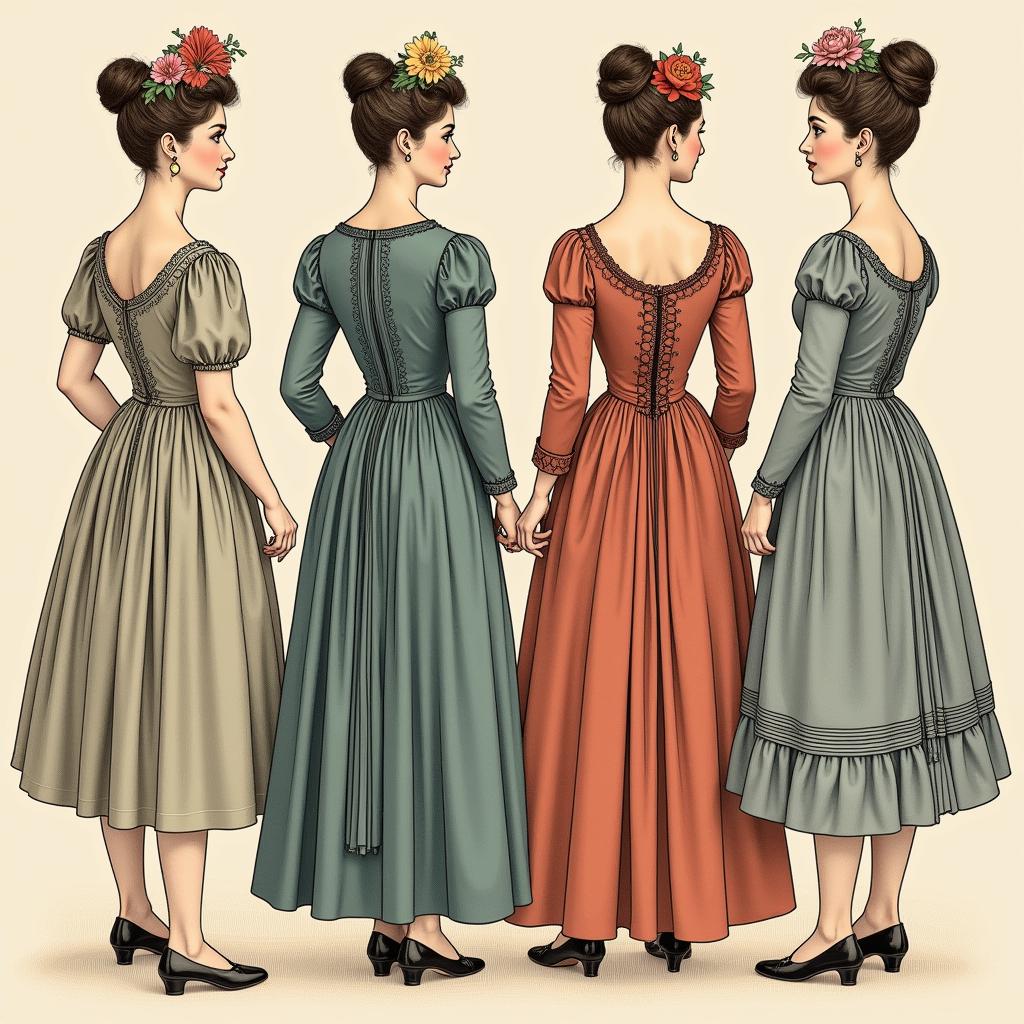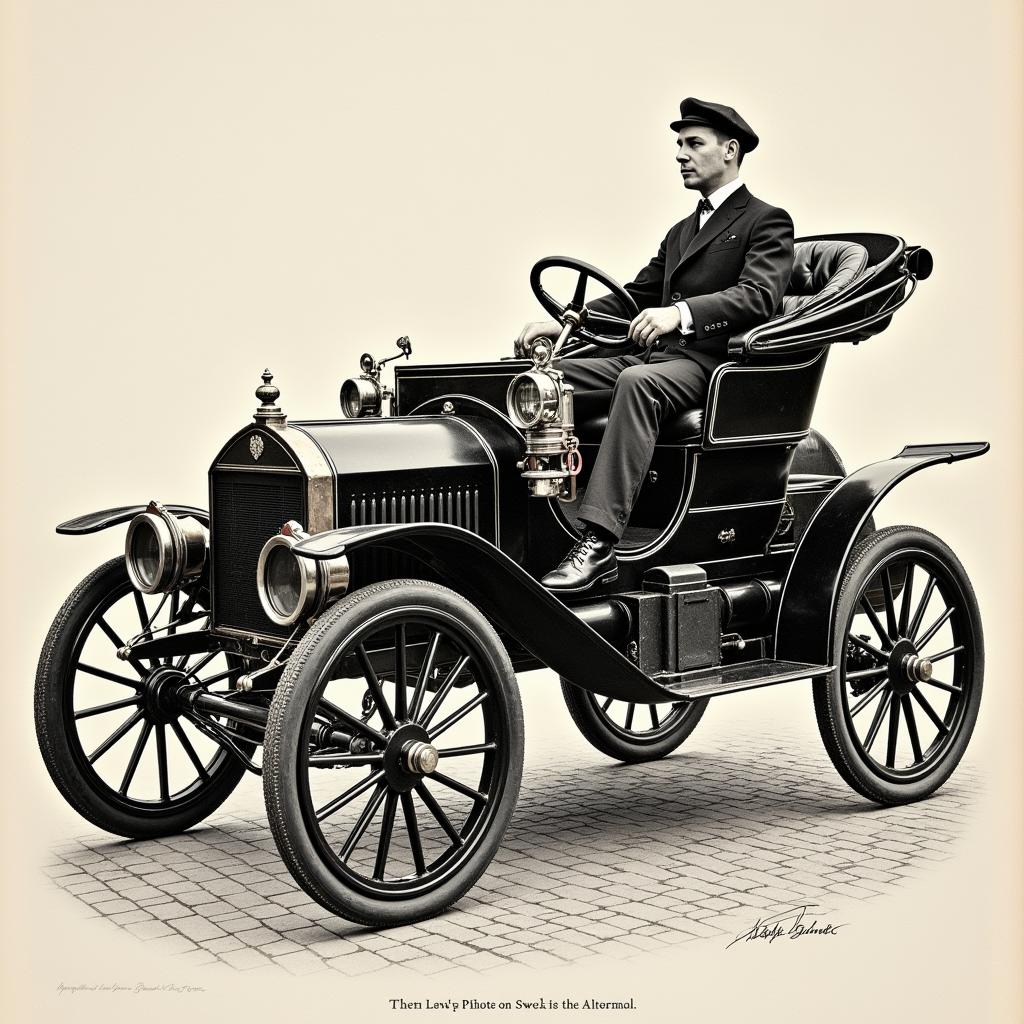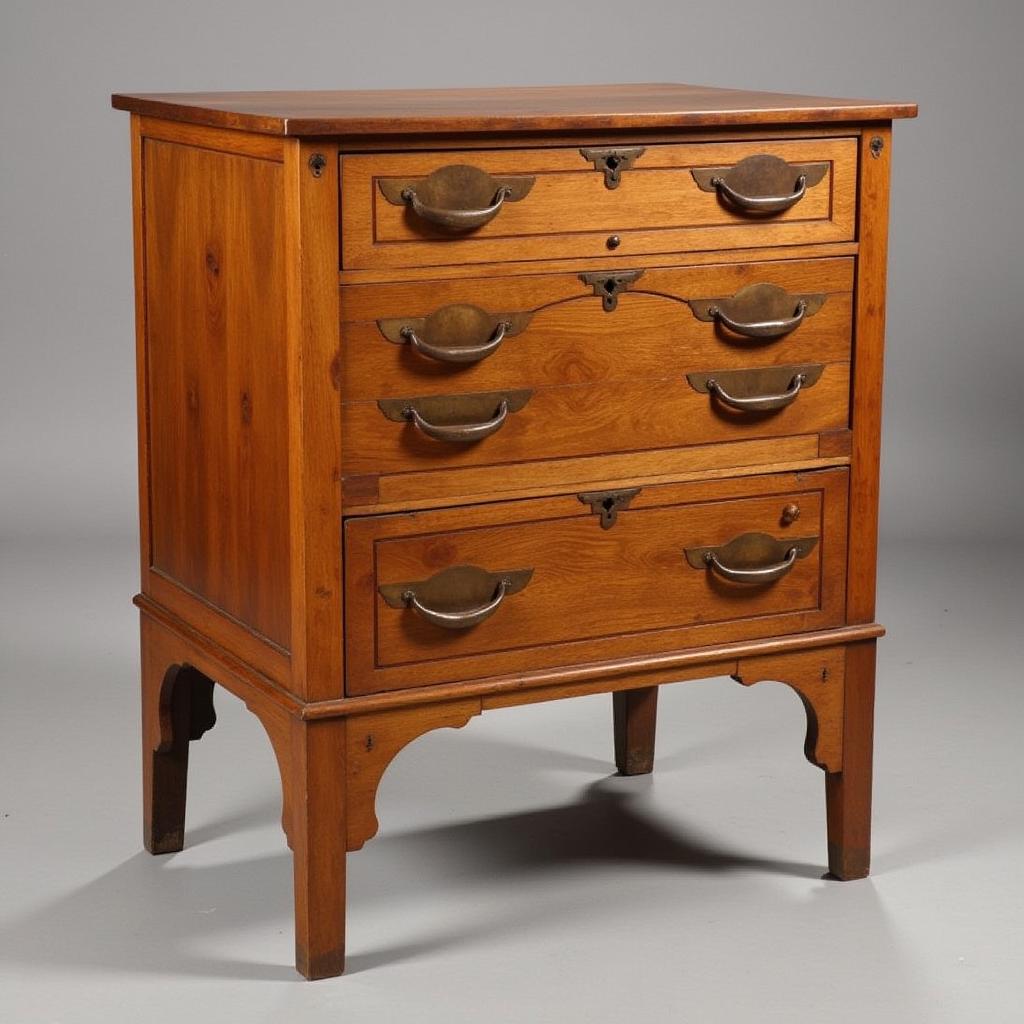The Edwardian era, spanning from 1901 to 1910, was a time of significant social, cultural, and technological change. It was named after King Edward VII, who ascended the throne upon the death of his mother, Queen Victoria. This period witnessed a shift from the Victorian era’s strict social norms to a more relaxed and progressive society, marked by advancements in fashion, technology, and the arts.
The Edwardian era is often romanticized for its elegance and refinement. From the intricate fashion of the time to the grand architecture and social events, the period holds a certain allure for modern audiences. While it’s important to acknowledge the historical context and complexities of the era, exploring Edwardian Society can provide valuable insights into the past and how it shaped the present.
The Edwardian Social Hierarchy
Edwardian society was characterized by a strict social hierarchy, much like its Victorian predecessor. However, the rigid class divisions began to soften, allowing for some upward mobility. The upper class, comprising aristocracy and wealthy industrialists, maintained a dominant position, while the middle class, including professionals, merchants, and shopkeepers, enjoyed a growing sense of prosperity. The working class, consisting of laborers, factory workers, and servants, continued to struggle for better working conditions and social rights.
Fashion and Style
Edwardian fashion was characterized by elegance, opulence, and a departure from the more austere styles of the Victorian era. Women’s fashion embraced a flowing, feminine silhouette, with corsets becoming less restrictive and skirts becoming shorter and more fitted. Men’s fashion transitioned towards a more tailored and understated look, with suits and ties becoming staples of the wardrobe.
“The Edwardian era was a time of great transformation in fashion, reflecting the changing social dynamics and the rise of new technologies.” – Dr. Amelia Thompson, Fashion Historian
The Rise of Technology and Industry
The Edwardian era witnessed a boom in technological advancements, including the development of the automobile, the airplane, and the telephone. These innovations not only changed the way people lived and worked but also had a profound impact on the economy and social landscape. The growth of industry led to the creation of new jobs and the rise of urban centers, contributing to social changes and the emergence of new cultural trends.
The Arts and Culture
The Edwardian era was a fertile ground for the arts, producing renowned artists, writers, and musicians. The Arts and Crafts Movement, with its emphasis on craftsmanship and traditional aesthetics, continued to flourish. Literature embraced realism, social commentary, and the exploration of contemporary issues. Music saw the rise of new genres, such as jazz, which emerged from the African American community in New Orleans.
“The Edwardian era was a period of significant artistic output, reflecting the social and cultural transformations taking place at the time.” – Professor William Davies, Art Historian
The Shadows of War
The Edwardian era ended abruptly with the outbreak of World War I in 1914. The war brought an end to the period’s optimistic and prosperous outlook, casting a long shadow on the years that followed. The war’s impact on society was profound, leading to social upheaval, economic hardship, and a profound sense of disillusionment.
The Legacy of the Edwardian Era
Despite its relatively short duration, the Edwardian era left an enduring legacy. Its influence can be seen in modern fashion, architecture, music, and literature. The era’s emphasis on elegance, refinement, and progress continues to inspire and captivate people around the world.
“The Edwardian era serves as a reminder that even the most seemingly stable periods can be subject to unexpected change and that the past can offer valuable lessons for the present.” – Dr. Emily Carter, Social Historian
Frequently Asked Questions (FAQ)
1. What were some of the key inventions of the Edwardian era?
The Edwardian era witnessed the development of groundbreaking inventions such as the automobile, the airplane, the telephone, and the vacuum cleaner.
2. What were some of the major social issues of the Edwardian era?
The Edwardian era faced social issues such as poverty, inequality, and labor exploitation. The working class struggled for better working conditions and social rights.
3. How did the Edwardian era differ from the Victorian era?
The Edwardian era saw a shift away from the rigid social norms of the Victorian era towards a more relaxed and progressive society. Fashion became more elegant and feminine, while technology and industry saw significant advancements.
4. What was the impact of World War I on the Edwardian era?
World War I brought a sudden end to the Edwardian era’s optimistic and prosperous outlook, leaving a lasting impact on society and culture. The war led to social upheaval, economic hardship, and a profound sense of disillusionment.
5. What is the relevance of the Edwardian era today?
The Edwardian era offers valuable insights into the past and how it shaped the present. Its influence can be seen in modern fashion, architecture, music, and literature. The era’s emphasis on elegance, refinement, and progress continues to inspire and captivate people around the world.



The Edwardian era was a period of significant change and progress, leaving a lasting impact on the world. By exploring the social, cultural, and technological aspects of this bygone era, we gain a deeper understanding of the past and its relevance to the present.